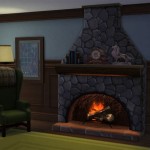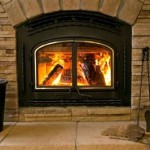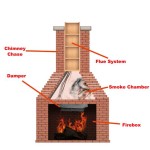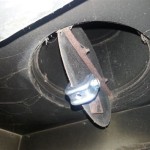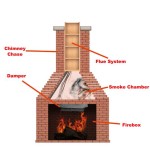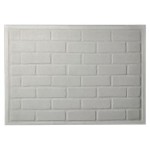Stacked Stone Fireplace Photoshoot: Capturing the Natural Beauty and Warmth
A stacked stone fireplace offers a unique blend of rustic charm and modern elegance, making it a highly desirable feature in residential and commercial properties. Consequently, professional photography of these fireplaces is crucial for real estate listings, interior design portfolios, and architectural showcases. A successful stacked stone fireplace photoshoot effectively communicates the fireplace's aesthetic appeal, construction quality, and its contribution to the overall ambiance of the space.
The inherent textures and natural variations in stacked stone demand a nuanced approach to photography. Lighting plays a significant role in emphasizing the depth and character of the stone, while composition and styling contribute to showcasing the fireplace as a focal point. A proficient photographer must possess technical expertise and an artistic eye to capture images that accurately and compellingly represent the stacked stone fireplace.
The preparation for a stacked stone fireplace photoshoot involves careful planning and execution. This process includes cleaning and staging the surrounding area, optimizing lighting conditions, and selecting appropriate camera equipment and settings. Attention to detail during the preparation phase directly impacts the final image quality and the effectiveness of the photographs in achieving their intended purpose.
Key Considerations for Lighting Stacked Stone
Lighting is paramount when photographing stacked stone fireplaces. Unlike smooth surfaces that reflect light uniformly, stacked stone presents a complex interplay of textures and shadows. Effective lighting strategies aim to accentuate these variations while avoiding harsh contrasts that can flatten the image or obscure the details.
Natural light, when available, can be a valuable asset. Soft, diffused sunlight from a window can gently illuminate the stone's surface, bringing out its natural colors and textures. However, direct sunlight should be avoided, as it can create strong shadows and highlights that detract from the overall image quality. Control over ambient light is necessary to achieve balanced and flattering illumination.
Supplemental lighting, such as studio strobes or continuous lights, offers greater control and flexibility. Multiple light sources can be strategically positioned to minimize shadows and create a more even illumination across the stacked stone surface. Diffusers and reflectors can further soften the light and reduce harshness, resulting in a more natural and pleasing aesthetic. The color temperature of the lights should also be carefully considered to ensure accurate color representation.
High Dynamic Range (HDR) photography can be beneficial in situations where significant variations in light intensity exist. This technique involves capturing multiple exposures of the same scene and then blending them together to create a single image with a wider range of tones. HDR photography can help to preserve detail in both the brightest and darkest areas of the image, resulting in a more dynamic and visually appealing representation of the stacked stone fireplace.
Optimizing Composition and Styling
Composition and styling are crucial elements in creating visually compelling photographs of stacked stone fireplaces. The composition refers to the arrangement of elements within the frame, while styling involves the selection and placement of objects that complement the fireplace and enhance its overall aesthetic appeal. A well-composed and styled photograph directs the viewer's eye to the intended focal point and effectively communicates the fireplace's beauty and functionality.
The photographer should consider the surrounding environment and how it interacts with the fireplace. The angle and perspective from which the photograph is taken can significantly impact the viewer's perception of the fireplace's size, scale, and design. Experimenting with different viewpoints can reveal unique perspectives and create more dynamic and engaging images. Using leading lines and the rule of thirds are compositional techniques that can draw the viewer's eye into the scene and create a sense of depth and balance.
Staging the area around the fireplace with carefully selected objects can enhance its aesthetic appeal and create a more inviting atmosphere. Items such as books, candles, decorative vases, and artwork can add visual interest and complement the stacked stone's texture and color. The styling should reflect the intended use of the space and the overall design aesthetic. For example, a rustic cabin fireplace might be styled with wood logs, fur throws, and antique lanterns, while a modern living room fireplace might be accented with sleek geometric objects and minimalist artwork. It's important to select objects that are proportionate to the fireplace and do not overwhelm its presence.
Pay attention to detail. Remove any clutter or distractions from the surrounding area. Ensure that the fireplace itself is clean and free of dust or debris. Straighten any crooked objects and adjust the lighting to eliminate reflections or glare. These small details can make a significant difference in the final image quality.
Technical Considerations for Capturing High-Quality Images
Achieving high-quality photographs of stacked stone fireplaces requires a solid understanding of photographic techniques and equipment. Selecting the appropriate camera, lens, and settings is essential for capturing sharp, detailed images with accurate color representation.
A professional-grade digital camera with a high-resolution sensor is recommended for capturing the intricate details of stacked stone. A full-frame sensor offers superior image quality and dynamic range compared to crop-sensor cameras. The camera should also have a wide range of ISO settings to accommodate various lighting conditions.
Lens selection is also crucial. A wide-angle lens is often used to capture the entire fireplace and its surrounding environment. However, a telephoto lens can be useful for capturing close-up details of the stone's texture and color. A prime lens with a wide aperture can create a shallow depth of field, blurring the background and drawing attention to the fireplace. A tilt-shift lens can be used to correct perspective distortions and ensure that vertical lines appear straight.
Camera settings should be carefully adjusted to optimize image quality. The aperture controls the depth of field, which affects the sharpness of the image. A smaller aperture (e.g., f/8 or f/11) will result in a greater depth of field, ensuring that both the fireplace and its surroundings are in focus. The shutter speed determines the amount of time the camera's sensor is exposed to light. A slower shutter speed is needed in low-light conditions, but it can also introduce motion blur if the camera is not stable. Using a tripod is essential for capturing sharp images at slow shutter speeds.
The ISO setting controls the camera's sensitivity to light. A lower ISO setting (e.g., ISO 100) will produce cleaner images with less noise, while a higher ISO setting (e.g., ISO 3200) will allow you to shoot in darker conditions but may introduce more noise. White balance should also be set correctly to ensure accurate color representation. Custom white balance or shooting in RAW format allows for greater control over color correction during post-processing.
Post-processing is a vital step in refining the images and achieving the desired aesthetic. Software such as Adobe Lightroom or Photoshop can be used to adjust exposure, contrast, color balance, and sharpness. Careful post-processing can enhance the textures and colors of the stacked stone, correct any imperfections, and create a polished and professional final product. The goal of post-processing is to enhance the natural beauty of the fireplace, not to create unrealistic or artificial-looking images.
Ultimately, a successful stacked stone fireplace photoshoot involves a combination of technical expertise, artistic vision, and meticulous attention to detail. By carefully considering lighting, composition, styling, and camera settings, photographers can create images that effectively communicate the beauty and warmth of these unique architectural features.

Foyer Intérieur Design D Aménagement Avec Parement Pierre Naturelle Inspirationmaison Idmaison Relooking Inspirationdesign Designinterieur Habitation Architecte Reno Amenagement Iddeco Tens Vivahabitation

Stacked Stone Fireplace Cozy Home Addition

Stacked Stone Fireplace Ideas For A Natural Look

12 Stacked Stone Fireplace Ideas For Optimal Coziness Angi

Stacked Stone Fireplace S Simply Stupendous

How To Hang Art On A Stacked Stone Fireplace No Grout Lines

Ledgestone Fireplace S North Star Stone

Stacked Stone Fireplace S High And Dry
:max_bytes(150000):strip_icc()/InteriorImpressions_2-261d8f7128f24652882c67a2252a5f0b.png?strip=all)
20 Stacked Stone Fireplace Ideas To Warm Up Your Space
:max_bytes(150000):strip_icc()/CASSPhoto_JND_Annisipour_032-a3070e61bb7e441698decd8a9af2950c.jpg?strip=all)
36 Stone Fireplace Ideas From Natural To Modern
Related Posts

